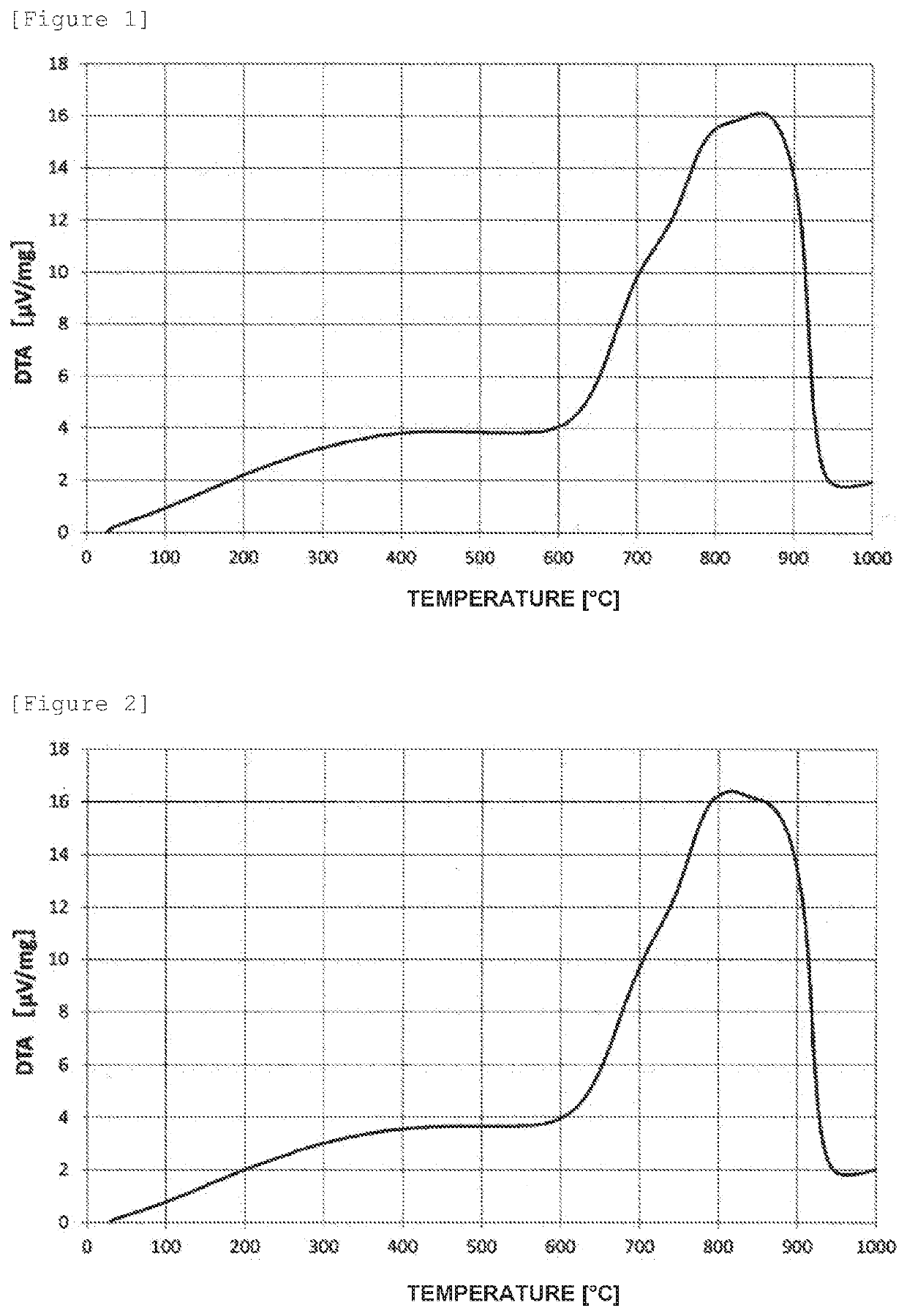Negative electrode material for lithium ion secondary batteries, method for manufacturing the same, paste for negative electrode, negative electrode sheet, and lithium ion secondary battery
a lithium ion secondary battery and negative electrode technology, applied in the direction of negative electrodes, electrochemical generators, cell components, etc., can solve the problem of extremely low cycle characteristics of lithium ion secondary batteries using silicon, achieve excellent si dispersibility, improve battery characteristics (initial discharge capacity, initial coulomb efficiency and cycle characteristics) and high capacity
- Summary
- Abstract
- Description
- Claims
- Application Information
AI Technical Summary
Benefits of technology
Problems solved by technology
Method used
Image
Examples
example 1
[0131]Nanosilicon-containing particles 1 in an amount of 4.4 kg and graphite particles in an amount of 3.8 kg were weighed and fed into a Cyclomix CLX-50 (manufactured by Hosokawa Micron Corporation) to be mixed at a peripheral speed of 24 m / sec for 10 minutes.
[0132]An alumina sagger was filled with the mixed powder to be heated up to 1050° C. at 150° C. / h under nitrogen gas flow, held for 1 hour, and then cooled to room temperature at 150° C. / h. The heat-treated product was collected from the alumina sagger and then pulverized by a bantam mill (manufactured by Hosokawa Micron Corporation, mesh: 0.5 mm) to obtain a composite material A.
[0133]Next, 2.4 kg of the composite material A and 5.0 kg of the nanosilicon-containing particles 1 were weighed, fed into a Cyclomix CLX-50 (manufactured by Hosokawa Micron Corporation), and mixed at a peripheral speed of 24 m / sec for 10 minutes to obtain a mixed powder.
[0134]An alumina sagger was filled with the mixed powder, heated up to 1050° C. a...
example 2
[0136]The nanosilicon-containing particles 1 in an amount of 22.2 g and graphite particles in an amount of 19.0 g were weighed and fed into a rotary cutter mill to be stirred and mixed at a high speed of 25000 rpm (peripheral speed: 150 m / s) for 1 minute while an inert atmosphere was kept with nitrogen gas flowing.
[0137]An alumina sagger was filled with the mixed powder to be heated up to 1050° C. at 150° C. / h under nitrogen gas flow, held for 1 hour, and then cooled to room temperature at 150° C. / h. The heat-treated product was collected from the alumina sagger and then pulverized by a bantam mill (manufactured by Hosokawa Micron Corporation, mesh: 0.5 mm) to obtain a composite material B.
[0138]Next, 11.9 g of the composite material B and 25.0 g of the nanosilicon-containing particles 1 were weighed and fed into a rotary cutter mill to be stirred and mixed at a high speed of 25000 rpm (peripheral speed: 150 m / s) while an inert atmosphere was kept with nitrogen gas flowing.
[0139]An ...
PUM
| Property | Measurement | Unit |
|---|---|---|
| particle diameter | aaaaa | aaaaa |
| volume-based cumulative particle size distribution | aaaaa | aaaaa |
| exothermic peak temperature | aaaaa | aaaaa |
Abstract
Description
Claims
Application Information
 Login to View More
Login to View More - R&D
- Intellectual Property
- Life Sciences
- Materials
- Tech Scout
- Unparalleled Data Quality
- Higher Quality Content
- 60% Fewer Hallucinations
Browse by: Latest US Patents, China's latest patents, Technical Efficacy Thesaurus, Application Domain, Technology Topic, Popular Technical Reports.
© 2025 PatSnap. All rights reserved.Legal|Privacy policy|Modern Slavery Act Transparency Statement|Sitemap|About US| Contact US: help@patsnap.com

